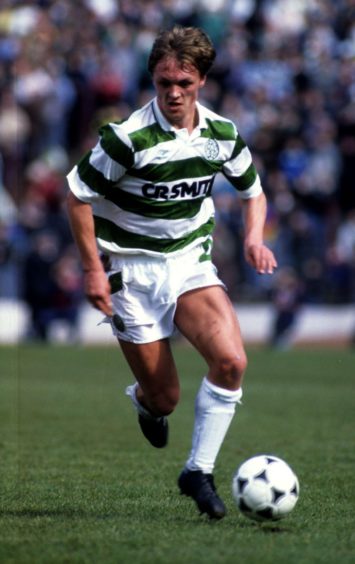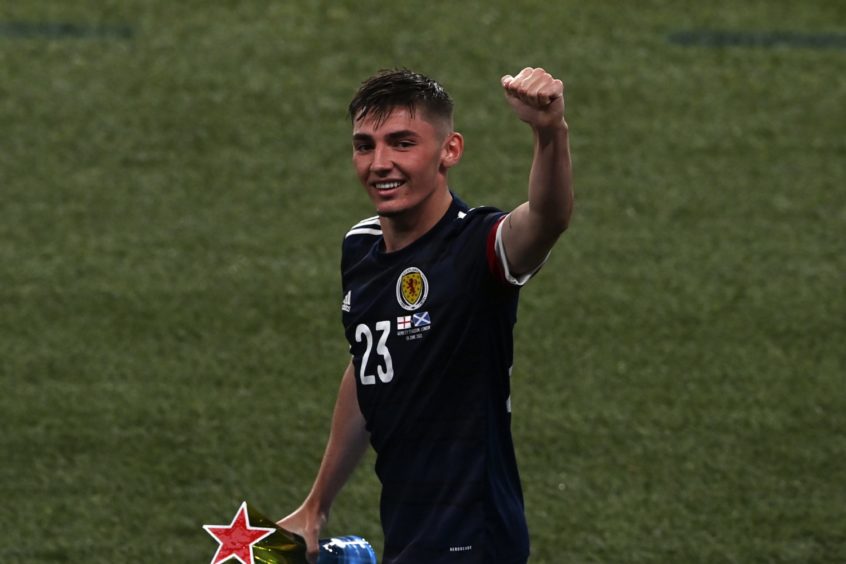
When Scotland took on Denmark and Moldova over the past few days, Ryan Gauld was watching on from afar.
Passed over by the country one time too many, the man once dubbed “Baby Messi” quit Portugal for Vancouver Whitecaps a handful of days before Argentinian icon, Lionel, landed at PSG.
Both had memorable introductions in their new home, for different reasons.
Messi himself was met with scenes reminiscent of the Boca Juniors-River Plate derby in his homeland, with the streets around the Parc des Princes alight with flares.
In one of the three Canadian outposts of the MLS, meanwhile, media arriving to meet the Scot were met by a trio of Scottish treats – shortbread, Irn-Bru and haggis crisps.
The first of many at BC Place 💙@RyanGauld's game-winning header from @RyanRaposo7's inch-perfect cross is your Move of the Match from #VANvLAFC #VWFC | @remaxwesterncan pic.twitter.com/6oodRfRDXp
— Vancouver Whitecaps FC (@WhitecapsFC) August 23, 2021
Eight years ago, it was not overly-fanciful to imagine that by the autumn of 2021, Gauld might be receiving a similar sort of superstar treatment that Messi enjoys.
Then aged 17, he had burst on to the Scottish scene with a succession of startling displays for Dundee United.
Jackie McNamara, his manager at the time, predicted he would not only go on to win a Scotland call-up pretty quickly, but would indeed become a “massive star” in the national team.
He was not alone in his confidence.
Portugal move
When Sporting Lisbon snapped up the teenager for a fee of around £3-million the following summer, they put him on a six-year-deal, and inserted a £48m buy-out clause in his contract.
It wasn’t needed.
By the time he dropped down a division to sign for Farense, he had made just one first-team appearance for each of the five years he had spent in the Portuguese capital.
Having sent him away on successive loans – three in Portugal and a fourth to Hibs – Sporting let him go for good.
His departure to the lower leagues sparked memories of so many Scottish players who have been tipped for meteoric achievement, only for their career paths to take a less-stellar trajectory.
Maybe they, too, were weighed down by comparisons and exaggerated nicknames?
Billy McNeil landed midfielder, Steve Fulton – then a young kid at Celtic – with a moniker for life when dubbing him the “Scottish Baggio” in a casual remark.
While Fulton did just fine in his career, notably at Hearts, he never got close to performing at the dizzy heights occupied by the Italian.
Eoin Jess at Aberdeen, Scott Allan at Dundee United, Simon Donnelly at Celtic, John Fleck at Rangers. There have been numerous examples of young talents, who have not quite managed to live up to their hype.
Turning things around
The interesting thing about Gauld and, in particular, his omission from the current Scotland squad, is that he has managed to turn things around.
He was the Player of the Year in the Portuguese second-tier in his first season as a signed Farense player.
Then, last season, he followed it up by shining in the country’s top flight, with nine goals and seven assists from midfield.
Scotland fans clamoured for his inclusion in the squad for the Euros, and when UEFA announced that squads were being extended from 23 to 26 men for the Finals because of Covid, Gauld believed he was sure to get the call up he craved.
When it failed to arrive, he saw no reason not to jump at the chance of a move to more exotic parts, leaving with the comment that he could not afford to sit around waiting for his form to be noticed.
Why was Gauld overlooked? Probably for two main reasons.
Firstly, that national coach Steve Clarke – who has insisted that a move to the MLS does not rule anyone out of selection, even though Jonny Russell (Sporting Kansas City) and Lewis Morgan (Inter Miami) are nowhere near his squad – does not particularly fancy him as a player.
Second is the emergence of Chelsea midfielder, Billy Gilmour, as a force to be reckoned with.
Currently on loan at Norwich City, the 20-year-old shows every sign of being a once-in-a-generation talent, with his Man-of-the-Match display against England at Wembley earning him praise across the world.
What happened next, though, should be a reminder to Gauld to be careful not to burn his bridges, with Gilmour ruled out of the crucial final game against Croatia after testing positive for Covid.
Things change.
Aberdeen’s Andy Considine is no stranger to nicknames, having been dubbed “the Banchory Baresi”.
As he proved when winning his first cap at the age of 33, it is never over until it is over.

Enjoy the convenience of having The Sunday Post delivered as a digital ePaper straight to your smartphone, tablet or computer.
Subscribe for only £5.49 a month and enjoy all the benefits of the printed paper as a digital replica.
Subscribe © SNS Group
© SNS Group © Facundo Arrizabalaga/AP/Shutterstock
© Facundo Arrizabalaga/AP/Shutterstock